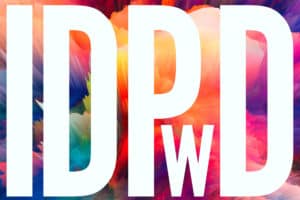
Indigenous Language Terms and Why You Need Them in Your Media
Diverse Indigenous communities across the world – of varying ages and locations – speak in native languages. Some of these languages have been spoken for thousands of years.
In the USA, Canada, Australia and New Zealand, speaking native languages can be an important cultural practice for Indigenous or First Nations communities. But unfortunately, these languages are often sidelined in public events, despite their enormous cultural significance.
Ai-Media supports our captioners around the world to be aware of Indigenous language terms, and our language term resources are always being updated. We regularly provide closed captions with Indigenous terms for Land Acknowledgements, Welcome to Country, and other events.
In this article, we explore Indigenous and First Nations languages in the USA, Canada, Australia and New Zealand, and look at how important it is to include these terms in your closed captions and other accessible media.
Access and recognition for Deaf Indigenous communities
Indigenous peoples across the world have higher rates of Deafness than non-Indigenous communities. Deaf access in Indigenous languages is especially important.
In addition to this, knowing and communicating these languages terms correctly is extremely valuable for participants in any event as well as for the audience. In a world where Indigenous languages and culture are often pushed to the side, words in Indigenous language can empower, educate and spread awareness about Indigenous cultures.
United States of America
There are close to 200 Indigenous languages spoken in the USA today, created and used by many different cultural groups or ‘nations’.
It’s important, when putting on an event, class or meeting, to be conscious of the Indigenous culture and history of your local area.
Depending on their location, many organisations and community groups choose to perform Land Acknowledgements to recognise the local Indigenous nation or community and pay respect to them.
Ai-Media captioners in the USA are familiar with the native land map, which shows the names of Indigenous territories, languages and treaties across the US (as well as Canada, Australia, New Zealand and parts of Europe).
Australia and New Zealand
In Australia, there are diverse Indigenous ‘countries’ that refer to different areas of land, and many different groups of Indigenous peoples. Some Indigenous peoples prefer the term ‘Aboriginal and Torres Strait Islander peoples’. There are over 300 Indigenous languages spoken in Australia today.
Australia captioners at Ai-Media are familiar with common words in a number of Indigenous languages, such as ‘boodjar’ (meaning land, ground or earth) and variations of ‘womindjika’ (meaning ‘welcome’). They also reference an updated list of common Indigenous community names.
In New Zealand, the Indigenous language of Māori peoples, known as te Reo Māori, is one of the three official languages of New Zealand since the passing of the Māori Language Act in 1987. (Fun fact: The third official language is New Zealand Sign Language!) Te Reo Māori terms are often used to welcome visitors at public events.
Canada
With over 50 Indigenous languages across Canada and many more communities and dialects, there is a lot to learn about First Nations, Inuit and Métis cultures.
The Inuit peoples have many communities across the northern regions of Canada. The main Indigenous language is Inuktitut, however each region has its own dialects.
Métis communities are a collective of cultures and ethnic identities that can be very distinct from each other.
And ‘First Nations’ or ‘Premières Nations’ is a term generally used to refer to Indigenous peoples other than the Inuit or Métis. There are over 630 First Nations communities in Canada.
Like Ai-Media staff in other regions, Canadian captioners use dynamic resources on these cultural communities, language groups, and common terms to perform their work.
When You Need Closed Captions with Indigenous Terms
It’s always good practice to engage someone who has a good understanding of the cultures of your local area – Indigenous and non-Indigenous alike. Ai-Media serves all communities, and provides services in many languages.
As always, if specific language terms are provided in advance, we can include even more detail. This is a simple part of our booking process!
If you have an event, class or meeting that requires captioning, just reach out to us, or find more information on our closed captions for recorded media, or live captions on the Ai-Media website.










